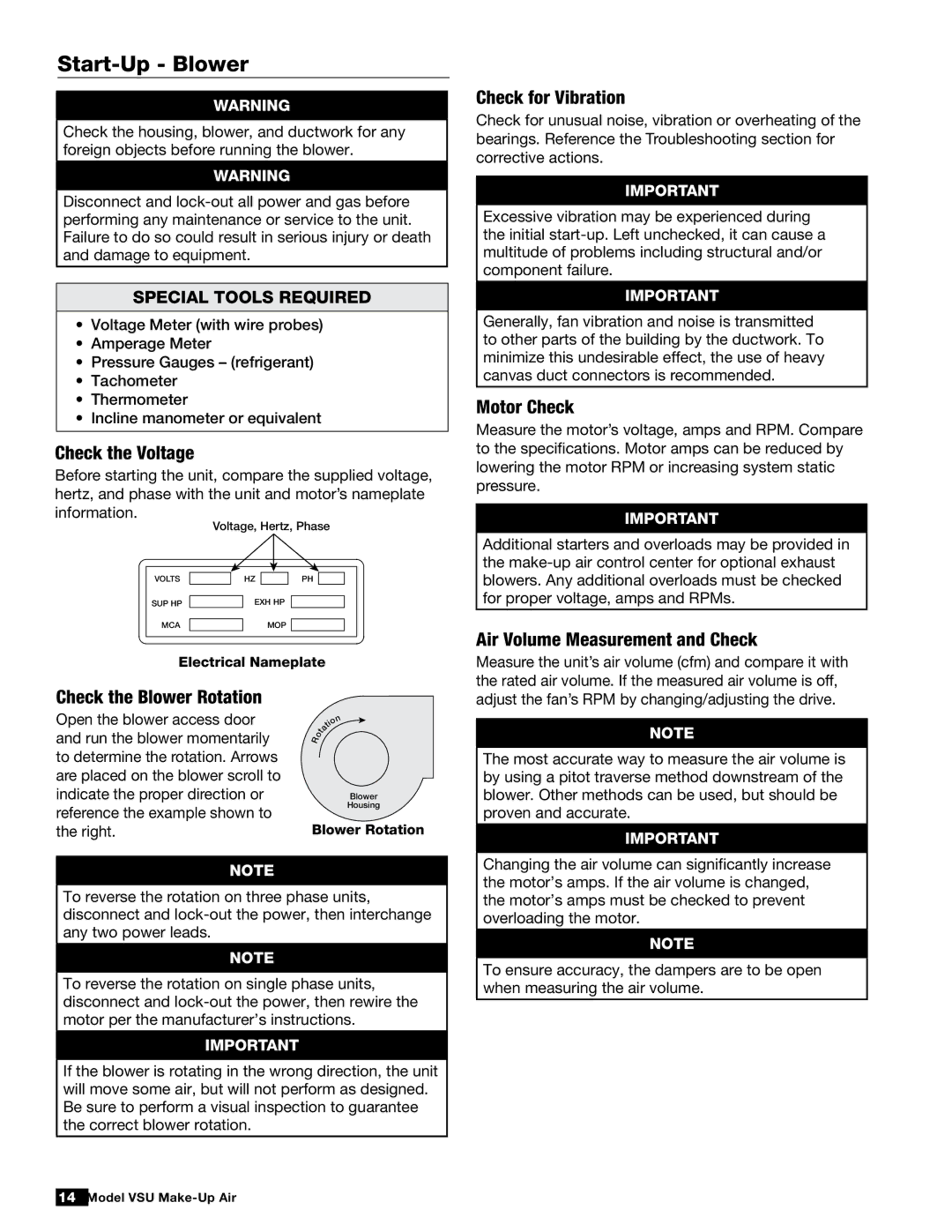470654 specifications
Greenheck Fan 470654 is a cutting-edge ventilation solution designed to meet the demanding requirements of commercial and industrial applications. Renowned for its reliability and efficiency, this fan model integrates advanced technologies and engineering to provide optimal air movement and control.One of the standout features of the Greenheck Fan 470654 is its robust construction. Designed with high-quality materials, the fan promotes longevity and durability, making it suitable for use in tough environments. This fan features a heavy-gauge steel housing that minimizes vibration and enhances noise reduction, contributing to a quieter operation, a critical factor in maintaining a serene working environment.
The fan is equipped with a powerful motor that ensures efficient airflow, achieving high performance while consuming minimal energy. This energy efficiency is emphasized through the use of advanced motor technology, including variable frequency drive (VFD) compatibility. VFDs allow for precise control of the fan speed, enabling adjustments based on system demand, thus significantly reducing energy consumption and operating costs.
In terms of airflow performance, the Greenheck Fan 470654 is engineered to provide a high volume of air movement while maintaining static pressure. Its aerodynamic design minimizes resistance, enhancing overall efficiency. The fan is designed to operate across a range of static pressures, making it versatile for different applications, from commercial kitchens to large manufacturing facilities.
Additionally, the fan's installation is straightforward, thanks to its user-centric design. The model incorporates mounting brackets and options for various duct configurations, ensuring seamless integration into existing systems. Maintenance is also made easier with accessible components, allowing technicians to perform regular checks and upkeep without extensive downtime.
Safety features are a priority in the design of the Greenheck Fan 470654. It includes protective features such as thermal overload protection to prevent motor damage and extend operational life. The fan's design also adheres to industry standards and regulations, providing peace of mind for users.
In summary, the Greenheck Fan 470654 is a well-engineered solution that combines durability, efficiency, and advanced technology to deliver superior performance in ventilation applications. With its powerful motor, energy-saving capabilities, and ease of installation and maintenance, it stands out as a reliable choice for professionals seeking optimal airflow management.

